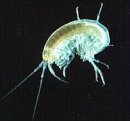Live Rock Critter Identification (Guide)
 - Organism is potentially toxic or venomous to humans. Research is recommended.
- Organism is potentially toxic or venomous to humans. Research is recommended.
 - Organism is a threat to other reef life through predation or aggression. Generally not reef safe.
- Organism is a threat to other reef life through predation or aggression. Generally not reef safe.
 - Organism is a pest that may overrun a tank. May not be reef safe.
- Organism is a pest that may overrun a tank. May not be reef safe.
 - Organism is beneficial to the reef tank. Benefits the ecosystem or is a sign of favourable water conditions.
- Organism is beneficial to the reef tank. Benefits the ecosystem or is a sign of favourable water conditions.
 - Organism is a food source for other reef inhabitants. Will provide beneficial live food for tank inhabitants.
- Organism is a food source for other reef inhabitants. Will provide beneficial live food for tank inhabitants.
Live Rock Critter Identification
I recently created this article and put it on another forum (predominantly freshwater) but thought it would be put to better use reproduced here :) Feel free to make suggestions for additions or changes/corrections!
Live Rock and the various creatures on it was the single biggest pull for me to try out a reef aquarium after owning several freshwater setups. The amazing diversity of life in a marine tank and the factor of "not knowing" what it is that is living in there is something that can't be replicated by your standard tropical freshwaters. Whether to mark pests for removal or out of scientific interest, this guide to identifying some of the more common hitchhikers on your live rock may prove useful to those looking to start a marine aquarium.
Contents
#1 - Arthropods (Bugs and shrimp)
#2 - Annelids (Segmented Worms)
#3 - Molluscs (Snails and Clams)
#4 - Cnidarians (Anemones and Corals)
#5 - Algae and Bacteria
#6 - Miscellaneous
Legend
External links and further reading
*** Chuck's Addiction has a comprehensive list of live rock hitchhikers
*** WWR has a reasonable hitchhiker identification guide
*** Saltwaterfish has an identification system for live rock inhabitants
Contents broken up due to image post restrictions / Sorry about the string of posts!
Sources:
Images used from:














